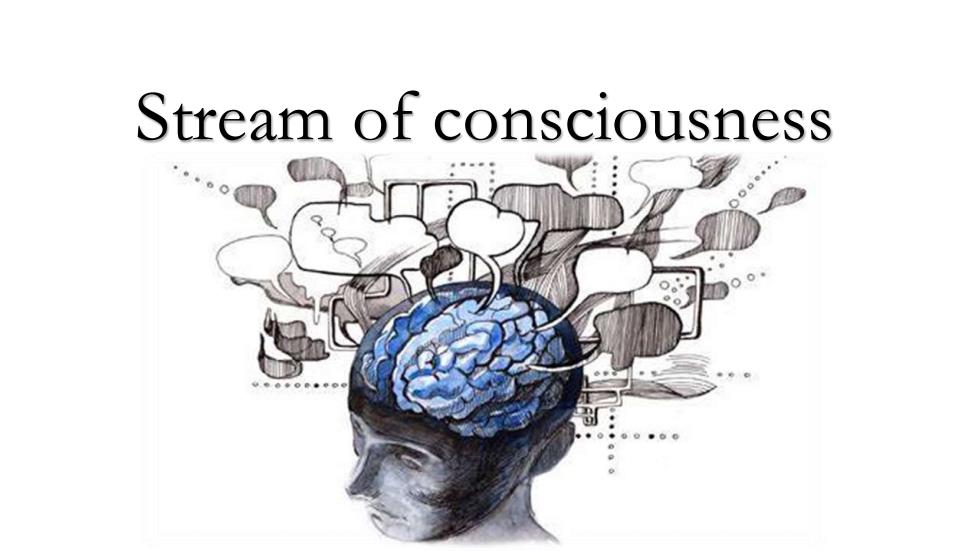
Stream of consciousness
Stream of consciousness
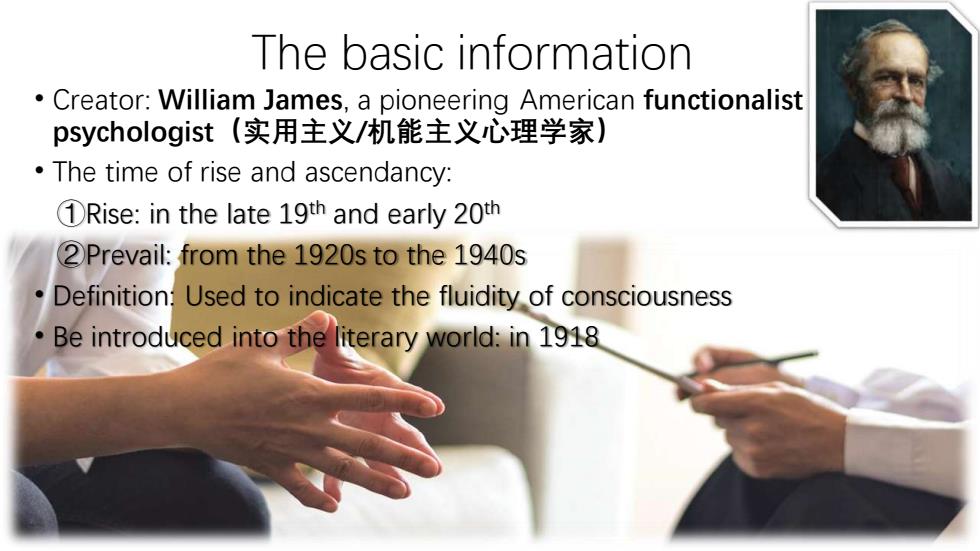
The basic information·Creator:WilliamJames,apioneeringAmericanfunctionalistpsychologist(实用主义/机能主义心理学家).The time of rise and ascendancy:Rise: in the late 1gth and early 20th2Prevail:fromthe1920stothe1940sDefinitionUsedto indicate the fluidity of consciousnessBe introduced into the literary world: in 1918
The basic information • Creator: William James, a pioneering American functionalist psychologist(实用主义/机能主义心理学家) • The time of rise and ascendancy: ①Rise: in the late 19th and early 20th ②Prevail: from the 1920s to the 1940s • Definition: Used to indicate the fluidity of consciousness • Be introduced into the literary world: in 1918
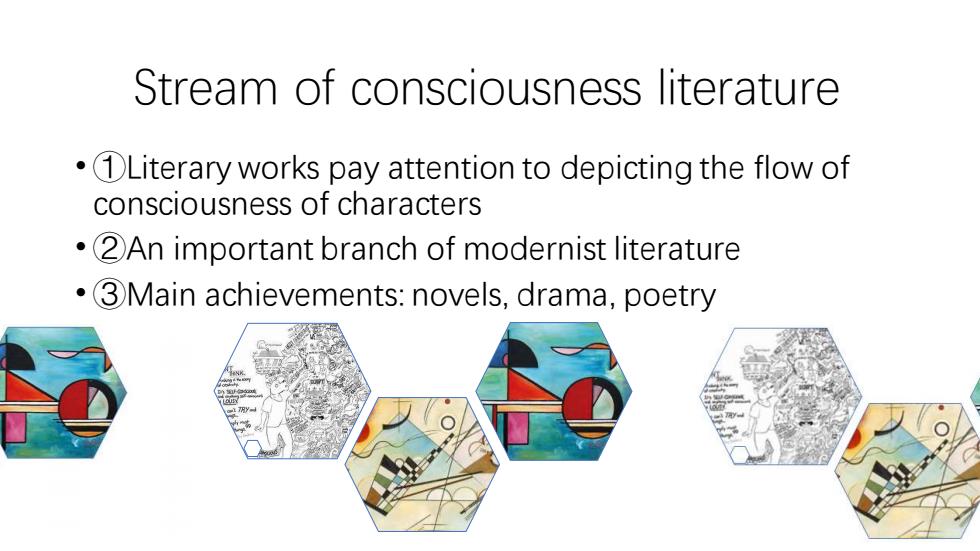
Stream of consciousness literature DLiterary works pay attention to depicting the flow ofconsciousnessofcharacters·An important branch of modernist literature·③Main achievements:novels, drama, poetry
Stream of consciousness literature • ①Literary works pay attention to depicting the flow of consciousness of characters • ②An important branch of modernist literature • ③Main achievements: novels, drama, poetry
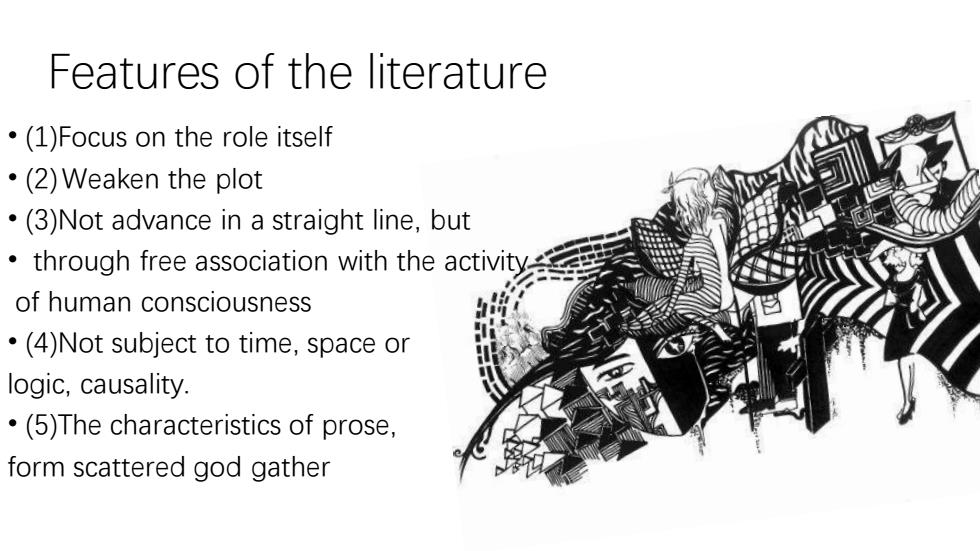
Features of the literature(1)Focus on the role itself:(2)Weaken the plot·(3)Notadvance inastraightline,butthroughfreeassociationwiththeactivitofhumanconsciousness (4)Not subject to time, space orlogic,causality·(5)The characteristicsof prose,form scattered god gather
Features of the literature • (1)Focus on the role itself • (2)Weaken the plot • (3)Not advance in a straight line, but • through free association with the activity of human consciousness • (4)Not subject to time, space or logic, causality. • (5)The characteristics of prose, form scattered god gather
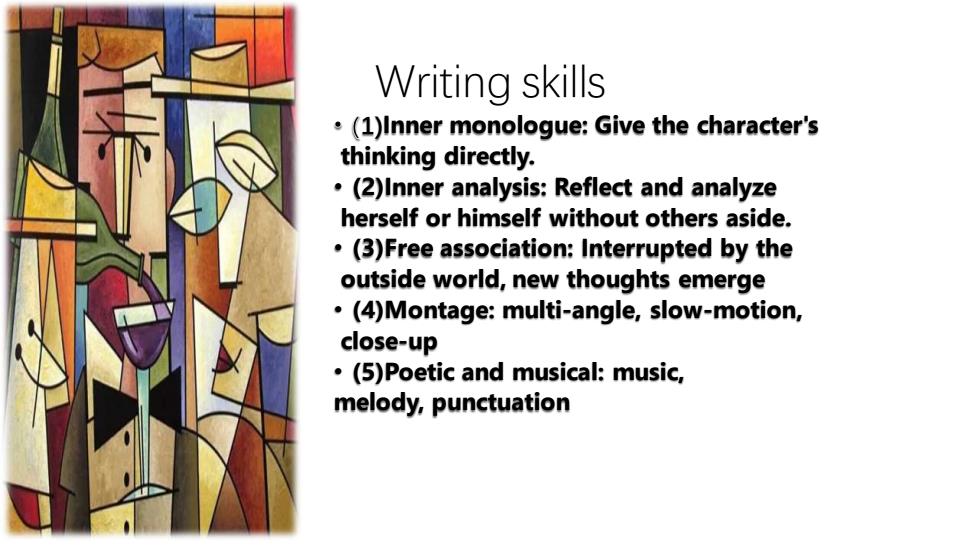
Writing skills:(1)lnner monologue:Give the character'sthinking directly..(2)lnner analysis: Reflect and analyzeherself orhimself withoutothersaside:(3)Freeassociation:Interruptedbytheoutside world, newthoughts emerge:(4)Montage:multi-angle,slow-motion,close-up.(5)Poetic and musical: music,melody,punctuation
Writing skills 1)Inner monologue: Give the character's thinking directly. • (2)Inner analysis: Reflect and analyze herself or himself without others aside. • (3)Free association: Interrupted by the outside world, new thoughts emerge • (4)Montage: multi-angle, slow-motion, close-up • (5)Poetic and musical: music, melody, punctuation